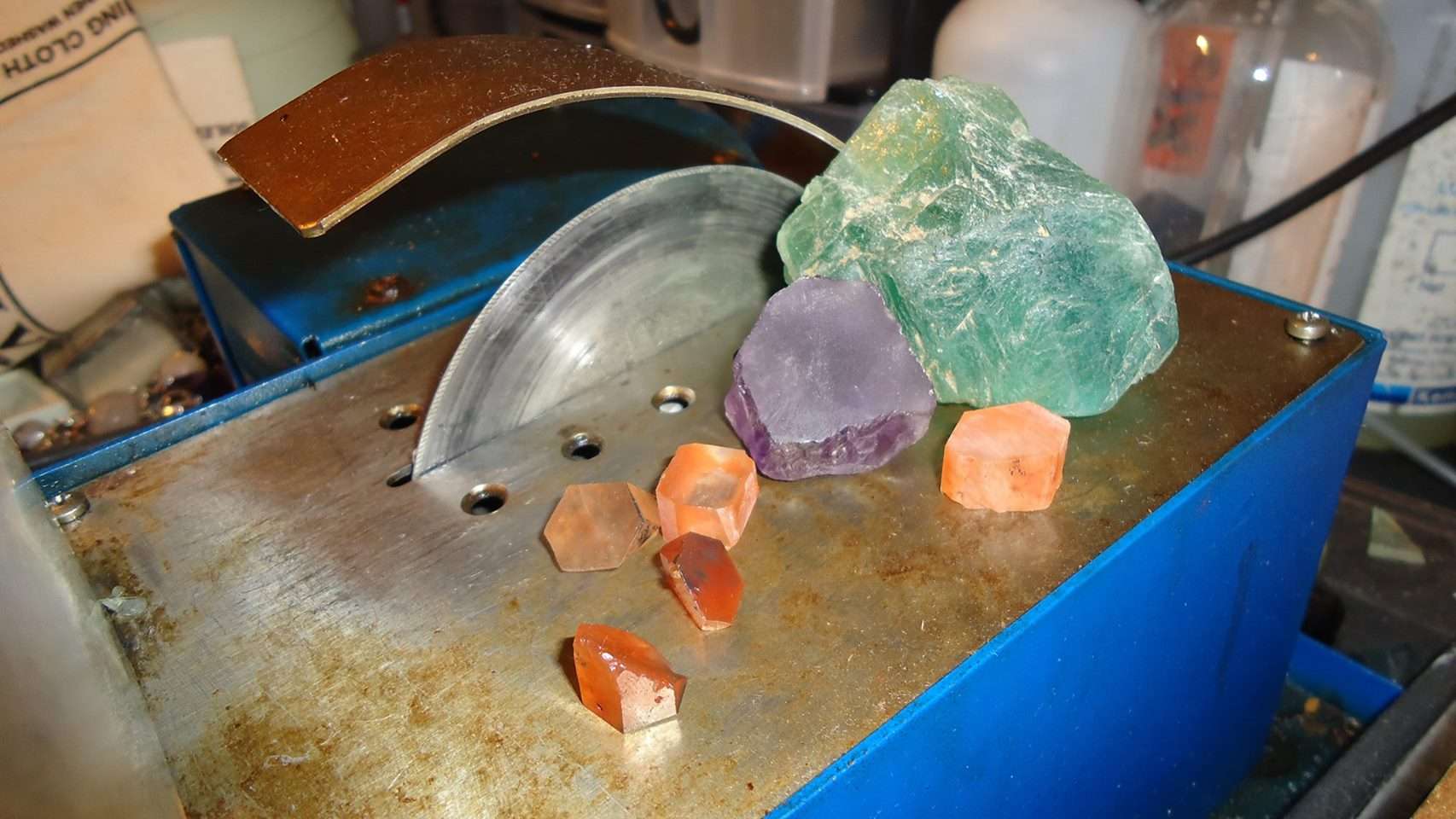 Gem cutting is a very delicate and painstaking procedure undertaken by highly skilled craftsmen and women called ‘Lapidaries’ or ‘Faceters’. The purpose of gem cutting is to bring out the natural beauty of the gemstone with regard to light and colour.
Gem cutting is a very delicate and painstaking procedure undertaken by highly skilled craftsmen and women called ‘Lapidaries’ or ‘Faceters’. The purpose of gem cutting is to bring out the natural beauty of the gemstone with regard to light and colour.
A gemstone, in it’s natural state, before faceting, is termed ‘unrefined’ or ‘rough’.
To the untrained eye, a piece of gemstone rough can look like a grotty pebble or rock. Even to the most passionate of collectors, until it is transformed into a piece of beauty by a Lapidary, it still looks like a rock or coloured pebble.
Equipment
 EQUIPMENT
EQUIPMENT
Like may other specialised crafts, a Lapidary requires special equipment and tools to turn the rough into beauty.
Around the world, various different types of faceting machines are used - from the huge cumbersome Indian machines to the cheaper Chinese ones. House of Gaea has been using the Facetron for the past 30 years and it is considered to be the ‘Rolls Royce’ of all of them.
Faceting machines are basically a plate, where different micron diamond embedded ‘laps’ rotate, very much like a vinyl record player. The Facetron is different in that it enables the stone to be held in place by a mast, at the angle it is to be cut, whilst being cut, unlike other cutting methods which we term in Africa as ‘jam pegging’ (the faceter holds the stone at a guessed degree, as in Africa, India, China, Indonesia and other main gem producing countries).
The Rough Sawing process
 THE ROUGH SAWING PROCESS
THE ROUGH SAWING PROCESS
before a gemstone is faceted, the faceter has to examine the rough gemstone carefully in order to determine the final polished gemstones’ outcome - keeping carat (weight), cut, size, colour and clarity in mind. A mistake in this process can impact on the value of the final gemstone.
Should the gem have a rough surface, which restricts a thorough examination into the heart of the stone, a ‘window’ is roughly polished onto a part of the stone.
If the rough gem is in need of sawing (to remove impurities or parts of the rough that are going to spoil the final look of the stone) then it is done by sawing the stone on a ‘trim saw’ - In commercial Lapidaries, ones that solely process standard precious gemstones - Ruby, Sapphire and Emerald etc, this is the norm.
House of Gaea, however, prides itself in not only faceting the top gemstones, but also newly discovered gems that are collected only for the impurities embedded in them for Holistic and Esoteric use - (which I’ll come to later on in the following article which covers Cabochon cutting).
